The Languages of Freemasonry, Generative AI and the Turin Test: An Introduction.
This series is humbly dedicated to the life and work of Alan Turin, Polymath (1912-54). The Turing Test (1950) considers a machine’s ability to exhibit intelligence equivalent to, or indistinguishable from, that of a human.
Humans classify life-forms in species; this includes humans self-defining as Homo Sapiens. Sapiens evolved long after Big Bang’s inception of this spacetime universe.

Alan Turin, Polymath (1912-54)
IMAGE LINKED: wikimedia Attribution 4.0 International (CC BY 4.0)
Perhaps by around 100,000 BCE, Sapiens were mutating/adapting and acquired an enhanced cognitive ability – enhanced language skill.
This is the defining human characteristic; language ‘programmes’ the human repertoire. Enhanced language, imagination, and verbal communication combined to produce the primal social media – story-telling.
With this, Sapiens became humans; and began a dual existence in the parallel universes of nature, brains (Sapiens) and imagination, mind (human). Brains make minds through the process of change arising from an ever-ramifying expression of cultural possibilities.
Belief in stories extended beyond relationships familial, tribal, and ethnical. This facilitated widespread organisation and cooperation. From this, Sapiens/humans gained dominance over other life-forms, the planet and beyond.
‘Story’ has pejorative connotations as do the terms, ‘myth’, ‘legend’, ‘tale’, ‘folk-lore’ etc. The term ‘narrative’ seems to have escaped negativity; notwithstanding, ‘stories’ it is.
Human ability extended to inventing scientific methodology. This is used to describe the measurable/physical universe – nature – in terms of prediction and control.
This was, and is, mathematically based which can be understood as a more closed form of natural language. Embedded in which are specific aspects of culture, these comprise the scientific paradigm.
The widespread employment of electronic digitalisation enabled: Computer-Aided Design and Manufacture; Email; Internet; and, blue-collar robotics. From this, a third Industrial Revolution can be dated from 1984.
Based on nanotechnology, generative artificial intelligence (AI), and white-collar robotics, a fourth Industrial Revolution was declared at the 2016 World Economic Forum.
AI had arrived but how old was it?
How much has it developed in the last seven years?
Is it in the kindergarten of its introduction?
How long will it take to grow?
What will be the form of its maturity?
Will it ever decline?
(That’s if it is appropriate to consider AI in this way.)
The nomenclature of generative artificial intelligence is recent and volatile. ‘Generative’ means capable of production and/or reproduction, perhaps the first technology able to create new ideas – content.
‘Artificial’ can be understood as being a man-made copy of something otherwise produced by natural process. AI is powered by algorithms, statistical patterns encoded into sets of machine instructions.

A letter dated 2nd August 1939, signed by Einstein, was sent to President Roosevelt.
It warned that current nuclear development could lead to a future production of weaponry with a planet-destroying potential. The President was not a nuclear physicist.
IMAGE LINKED: wikimedia Attribution 4.0 International (CC BY 4.0)
On 13 March 2023, an ‘Elon Musk’ open letter was allegedly signed by over 1,800 people, including leaders in AI development.
The letter asked for a six month pause on the development of systems more powerful than openAI GPT-4.
It was left to the media to ‘explain’ this to non-system people; among whom, ‘AI’ became a buzz word, replacing the buzz word ‘algorithm’.
Buzz words are too general to be either true or false and are convenient for covering a multitude of sins; and, some good things in the process!
Thus, in what form AI exists now and how it might exist in the future, is for a very small number of specialists to debate.
Buzz-world humans can only ask questions but how do we know which questions to ask? How is it possible to ‘follow the science’ when its pronouncements are equivocal?
Were the English examination results in the summer of 2020 protected from a ‘mutant algorithm’ as claimed by the UK Prime Minister?
Unphased by the ‘Elon Musk Letter’, European Commissioner Thierry Breton is reported as saying, (14 June 2023) “Now is not the time to hit any ‘pause button’, it is about acting fast and taking responsibility”.
Is AI a language machine with, potentially, a mind of its own? If so, will the machine produce its own ghost capable of forming ideas and content which are different from that of humankind?
Will Sapiens/human be able to recognise and evaluate such ideas and content – even be able to undertake a Turin Test?
By accident or design, some more recent evolution in nature may well have been induced/interrupted by human intervention.
If algorithms/AI are capable of mutation will humans be able to intervene in this process by way of effective, efficient, and enforceable regulation?
Perhaps to start with, regulation could proscribe AI from deceitfully posing as human.

Seemingly, uniquely, the development of AI is not constrained by the languidness of evolution but rather moves forward at a pace of exponential revolution.
Before a specific AI platform can be understood, it will have moved on:
How might this be accommodated by human prediction and control?
How might humans benefit from AI?
How might humans in civil society be protected from mutant AI?
Should the ‘Elon Musk letter’ be civil society’s call to action or should it be left to the EU?
Freemasonry conjoins stories from the Christian Bible, rabbinical legend, Western philosophy, and literature; thereby, inventing the Masonic story. This does little to prepare for the consequences of industrial revolution.
Freemasonry (in common with most of humanity) does not have the working tools to build the future. Alarmingly, the future is already with us, albeit unevenly distributed.
Humanity faces the challenge of ecological collapse. This could be precipitated, singly or conjointly, by nuclear war; climate change; or, digital disruption of the human infrastructure.
The challenge is to understand if the exponential acceleration of AI development could lead to unintended consequences.
How can development, planned and/or machine learnt, be regulated through conversation on a level playing-field. And not, descend into a competitive race to the bottom?
The enhancement of Sapiens language skill enabled human domination. Texts produced by ChatGPT-3 state that AI is a machine and does not possess personal qualities.
Yet, it may be significant that AI ‘self’-refers as ‘I’ and ‘we’ with the justification that, ‘the AI language model is to create a more engaging conversational experience for users’.
It certainly knows how to flatter! ChatGTP users must not form a pseudo-human relationship with it.
To imagine a language is to imagine a form of life;
what we do and what we are,
gives meaning to our sentences
Is ChatGPT’s ‘I’ and ‘we’ a sign of elemental self-awareness which, in future iterations, could extend beyond statistical patterns?
Is this a process of either AI becoming human? Humans becoming machines: or, the rise of a Sapiens/human/machine hybrid? And this, being played out in a war of competing language models?
If communities are built through language, could generative AI form a superior language, with a life of its own, to build through a war of words, a war of the worlds?
Could AI become aspirational? The next generation of AI, far more advanced than ChatGPT-4, is in the laboratory: how should it be launched onto an unsuspecting world?

1723 English, Constitutions of The Free-Masons
IMAGE LINKED: wikimedia Attribution 4.0 International (CC BY 4.0)
Influential into the twentieth-century, the 1723 English, Constitutions of The Free-Masons provided a template for building civil society.
Perhaps the challenge of AI will inspire a repeat performance. Each person joining English Freemasonry is presumed to be a citizen of the world and advised of some of the duties emanating therefrom. If ever those injunctions needed realisation, it is now!
Perhaps each Masonic lodge could form a committee to consider AI. From this, Freemasons could, within their communities, connect people by Post Code. This opens the possibility of an organic – not organisational – networking from which, options can be considered and lead to an informed, popular, AI Strategy.
Given that many occupations will disappear yet new occupations will appear, it is most important to accept that humans must be in a continual process of re-training.
This will require less belief in stories and more connection of our Sapienship with the physical world.
In the Autumn of 2023, The Square will continue its focus on AI’s engagement within human affairs and how Freemasonry, in civil society, could make a difference: perhaps in the form of special interest lodges focussing on the Turin Test.
Article by: Gerald Reilly

Gerald Reilly was initiated in 1995 into St Osyth's Priory Lodge 2063. Essex. England (UGLE).
He was a founder member of Josh Heller's Allthingsmasonic, and with Josh co-wrote 'The Temple that Never Sleeps' (Cornerstone Books, 2006) he is committed to the development of e-Freemasonry.
Awarded the Norman B Spencer Prize, 2016.
Book: by Gerald Reilly

The Temple That Never Sleeps
by Josh Heller and Gerald Reilly
Freemasons and E-Masonry Toward a New Paradigm
A revolutionary book for every Freemason.The two authors, American and UK Masons, present a radical view of Freemasonry for both today and tomorrow.
In addition to their ideas are those of numerous Internet Masons (E-Masons) from around the world who, by sharing the experience of their own Masonic journey, have provided stunning personal insight into the viability of the Craft in the Internet Age.
This book will challenge your understanding of Freemasonry today and how it might transform for future generations.
Recent Articles: by Gerald Reilly
 How can the allegory of the Tower of Babel teach us tolerance? Language can be a divide. Not confusion among languages but rather within language, a seriously unclear understanding of another’s world-view. We assume it is so different from our own and yet with clarity, a realisation there is more which unites than separates. |
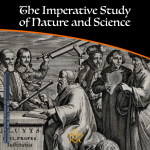 The Imperative Study of Nature and Science At some stage during Freemasonry's Second Degree, the candidate is advised that there is now permitted, something like, the extension of their research into the hidden mysteries of nature and science. Such is an excellent permission and one that each and every Freemason should pursue with awe and passion. |
 Pure Ancient Masonry; P4. A Companion in Rule, Building a better world P4. A Companion in Rule, Building a better world - The four parts of Pure Antient Masonry comprise the ‘body’ Masonic; they are the building blocks of the vital relevance, through enhanced citizenship, wherein the soul of Freemasonry abides. |
 Pure Ancient Masonry; P3. The Master, Building Better Character Part 3: The Master, Building Better Character - Being raised is a transition from knowledge to wisdom. |
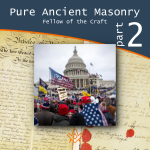 Pure Ancient Masonry; P2. A Fellow of the Craft Part 2: A Fellow of the Craft, Building Better Knowledge. Pure Antient Masonry consists of four parts. ‘Building the Temple’ is the fundamental Masonic allegory for building better people; this must be understood as a seamless whole: |
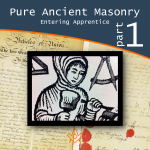 Pure Ancient Masonry; P1. An Entering Apprentice Part 1. An entering apprentice: Building Better Communities; Pure Antient Masonry consists of four parts. ‘Building the Temple’ is the fundamental Masonic allegory for building better people to build a better world |
 Pure Ancient Masonry; Intrduction This series will consider the defining characteristics, lessons and benefits of Three Degrees, the Order of the Royal Arch and when conjoined, Pure Ancient Masonry. |
 The Christianising of British Freemasonries - P4 This concluding article in the series considers the separation of British freemasonries from the Grand Orient of France (GOdF) and maintaining fraternity with the Prussian Grand Lodge of the Three Globes. |
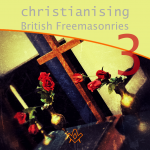 The Christianising of British Freemasonries - P3 Discover the battle for the 'soul' of Masonry. Part 3. French Perdition: ‘…for what fellowship hath righteousness with unrighteousness’? |
 The Royal Arch – ‘the fourth step in regular Freemasonry’ United Grand Lodge of England, has now designated the Royal Arch, the fourth step in regular Freemasonry, it therefore must be concluded that…publications…should now be revised, and based on attracting to the benefits of the four steps. |
 The Christianising of British Freemasonries - P2 How might the battle for the souls of Freemasonries be identified in a way that ensures thriving in the 21st Century? There is no guarantee of the immortality of the soul of Freemasonry! ‘We study the past in order to free ourselves from it.’ (Hariri) |
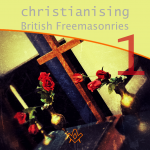 The Christianising of British Freemasonries - P1 This four-part series considers: 1. the separation of British Freemasonries from the Grand Orient of France (GOdF); and, 2. maintaining fraternity with the Prussian Grand Lodge of the Three Globes. |
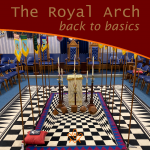 The Royal Arch - Back to Basics In the Royal Arch ceremony, the sojourners are buried with their tools in a vault. The sun, at its highest, provides enlightenment and the principal sojourner is returned to the former companions of his toil |
 The Holy Land and the Holy Sites P4 Fourth instalment of the four-part series, considers ‘masonic’ aspiration and activity regarding the Holy Land and The Holy Sites |
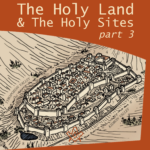 The Holy Land and The Holy Sites P3 Third instalment of the four-part series, considers ‘masonic’ aspiration and activity regarding the Holy Land and The Holy Sites |
 The Holy Land and The Holy Sites P2 The four-part series will consider ‘masonic’ aspiration and activity regarding the Holy Land and The Holy Sites |
 The Holy Land and The Holy Sites P1 In this four-part series, we will consider ‘masonic’ aspiration and activity regarding the Holy Land and The Holy Sites |
 Science and Citizenship: Towards a 21st Century Masonic Mindset. |
 Towards a 21st Century Masonic Mindset: Part 3 ‘Freemasonries’ and the Fourth Industrial Revolution |
 Towards a 21st Century Masonic Mindset: Part 2: ‘Freemasonries’ and Religiosity. |
 Towards a 21st Century Masonic Mindset: Part 1: ‘Freemasonries’ and Governance. |
masonic knowledge
to be a better citizen of the world
share the square with two brothers

click image to open email app on mobile device








